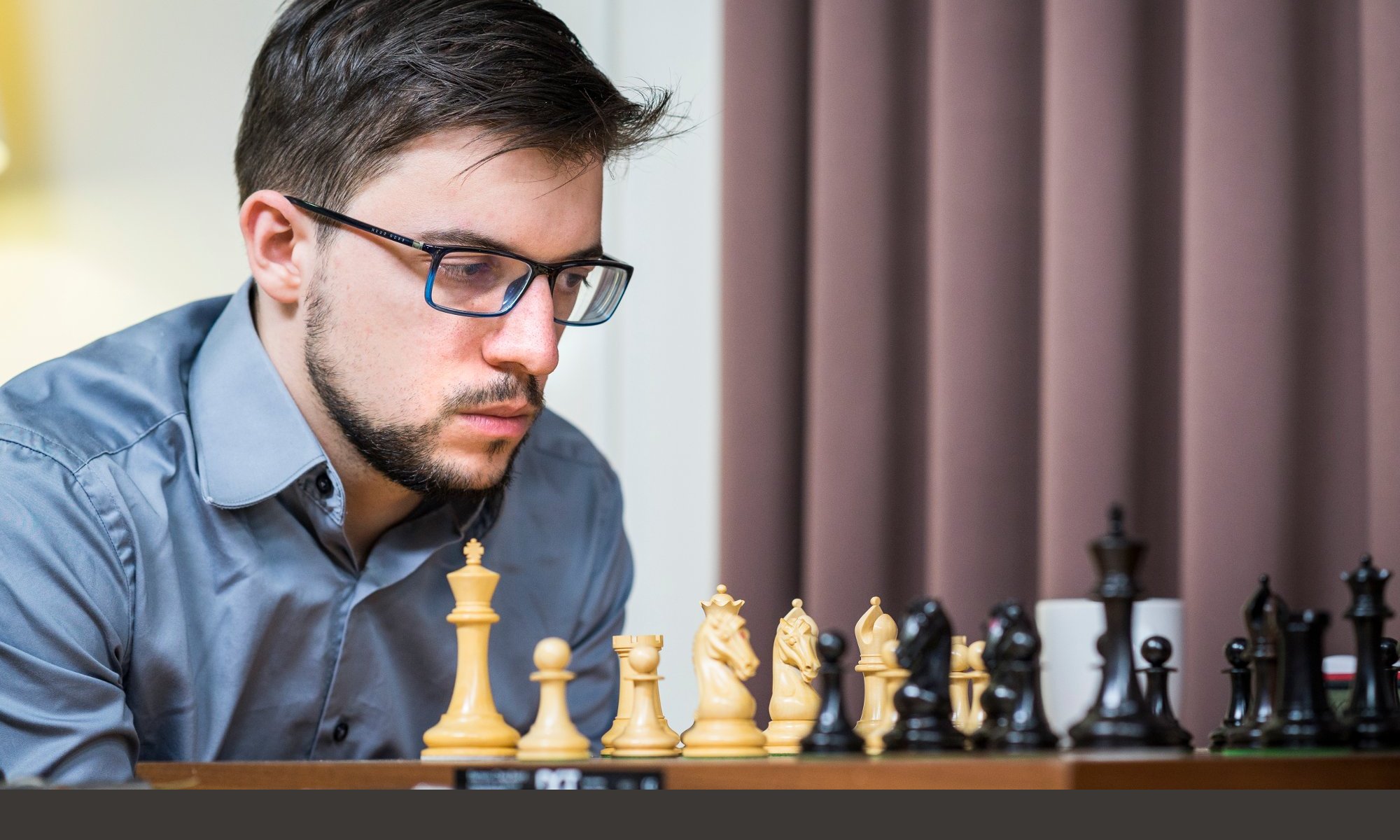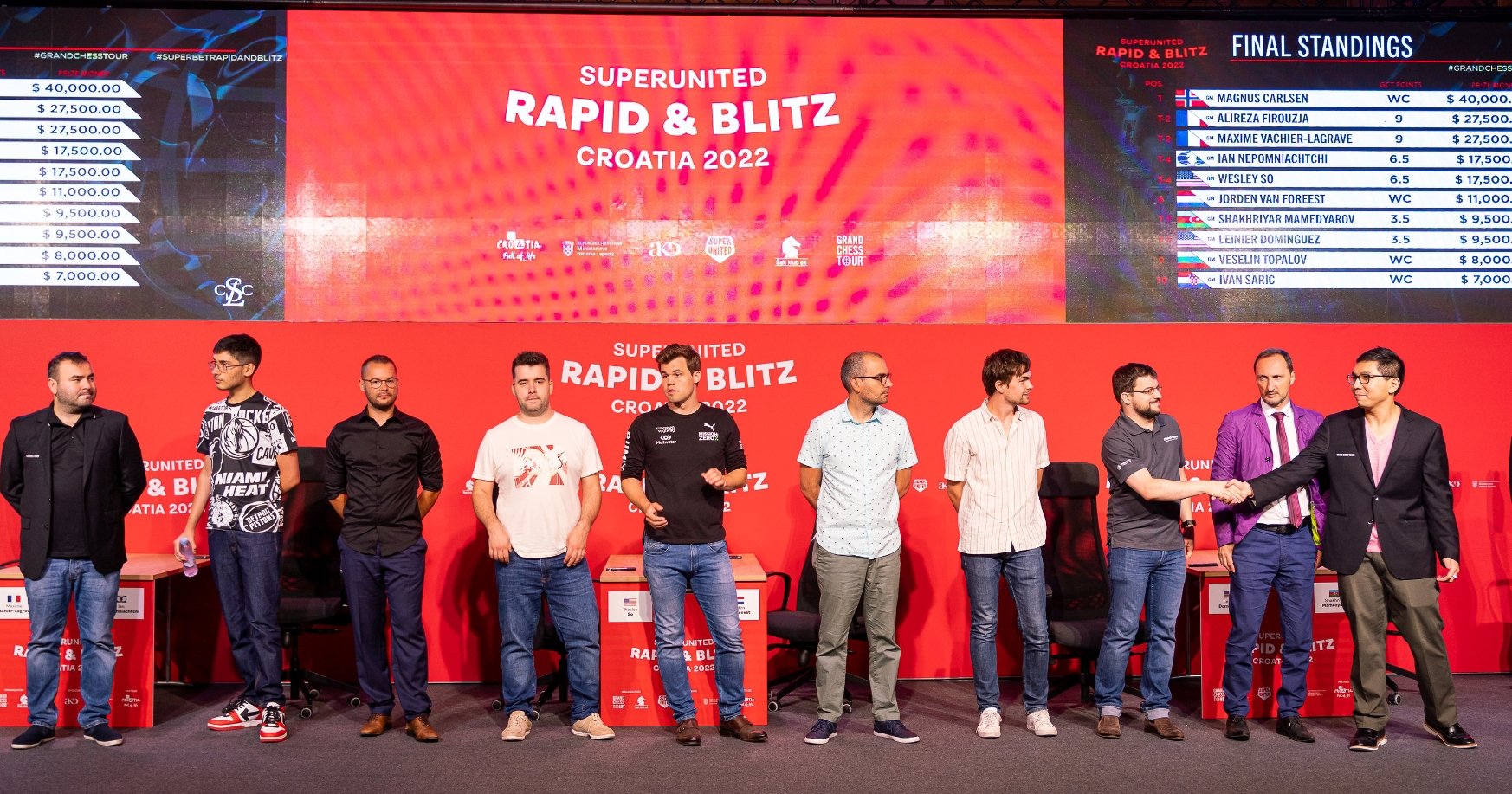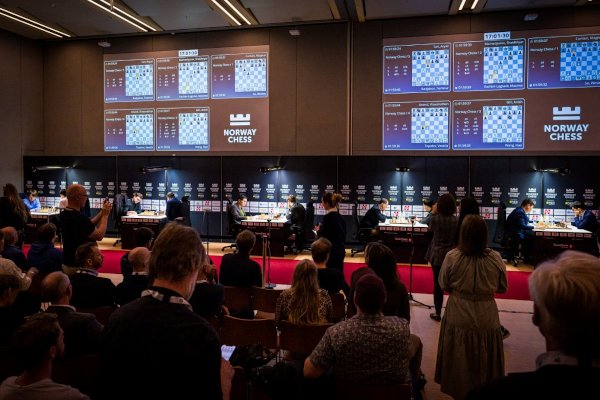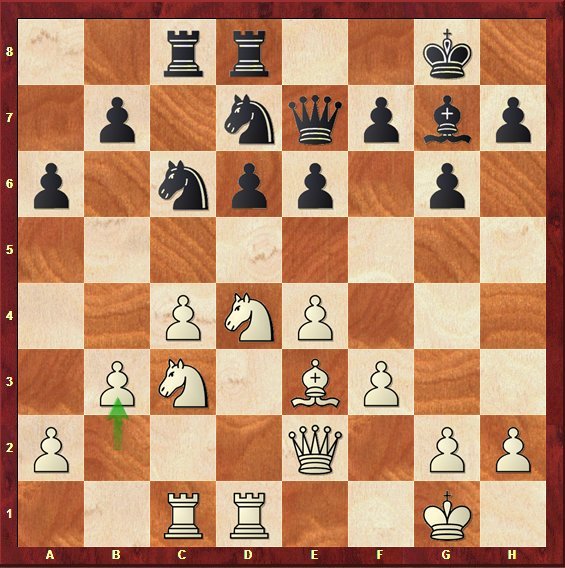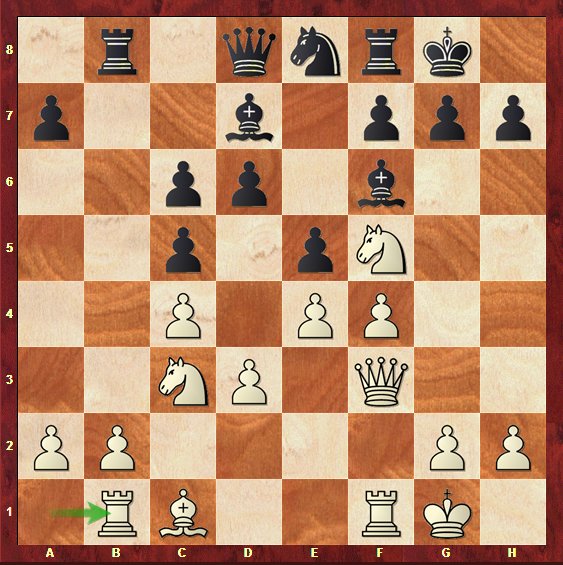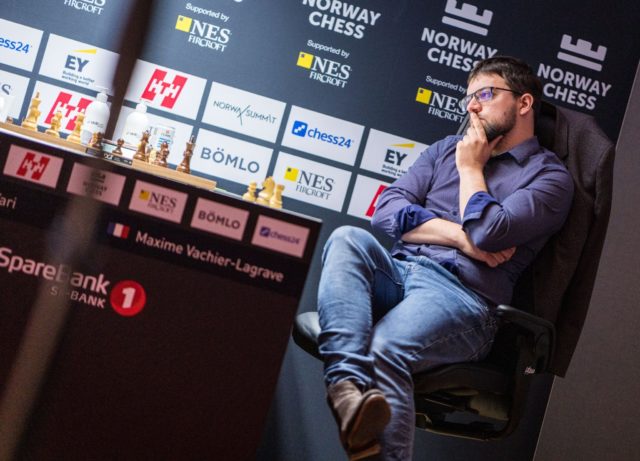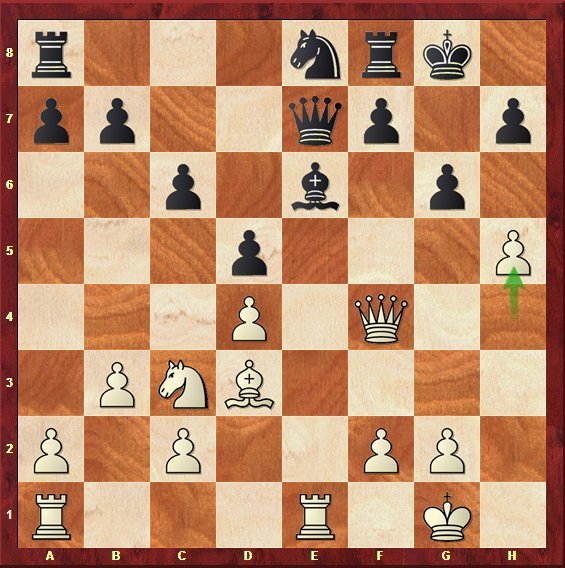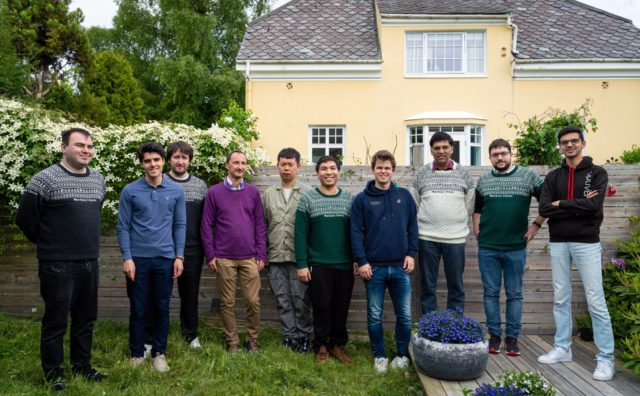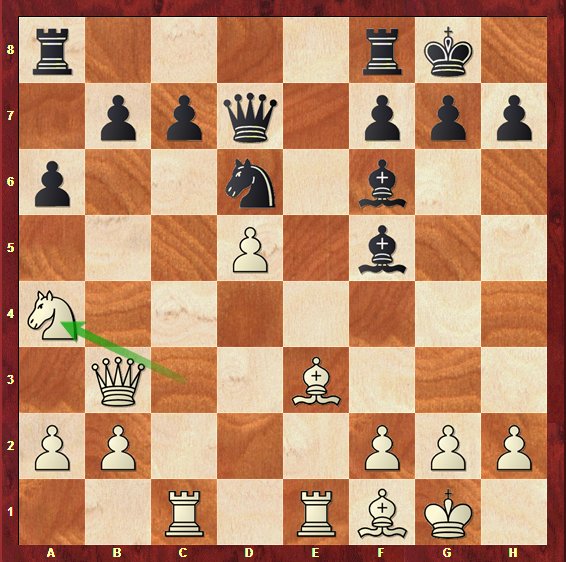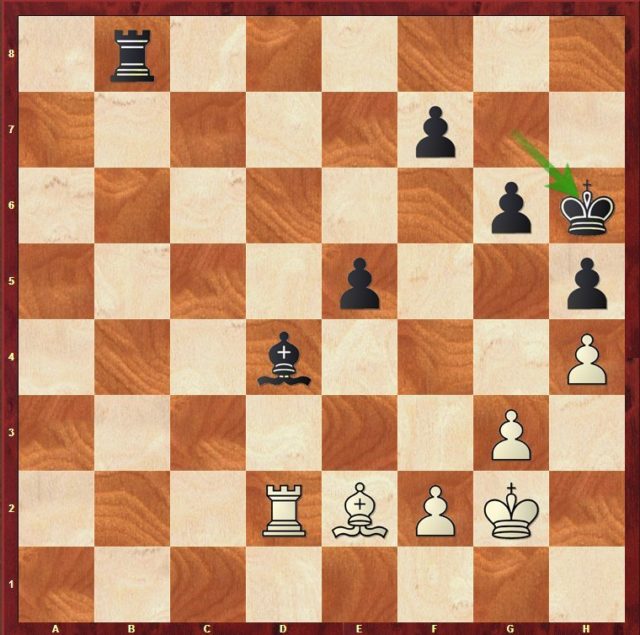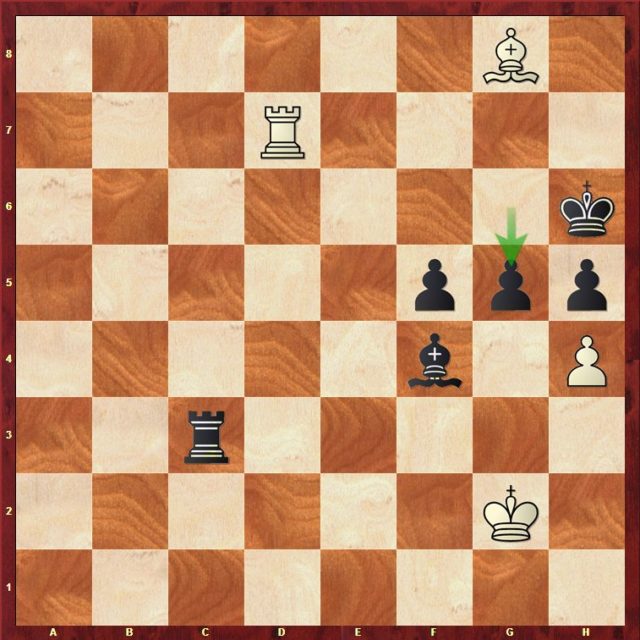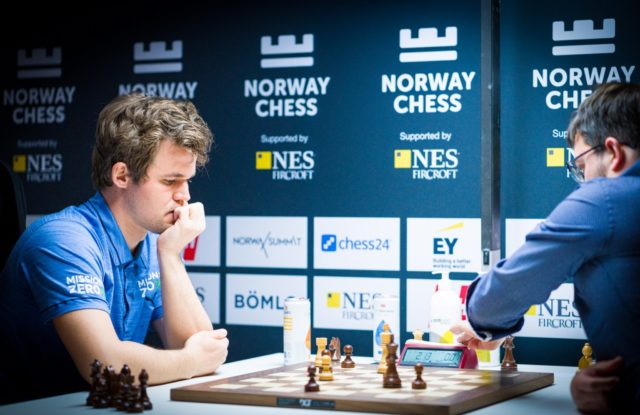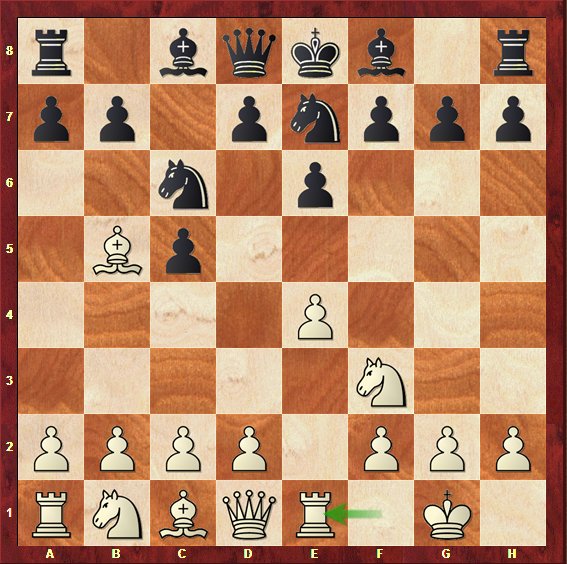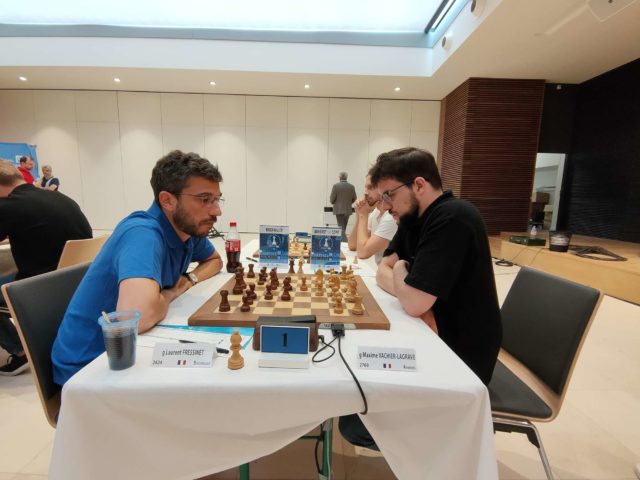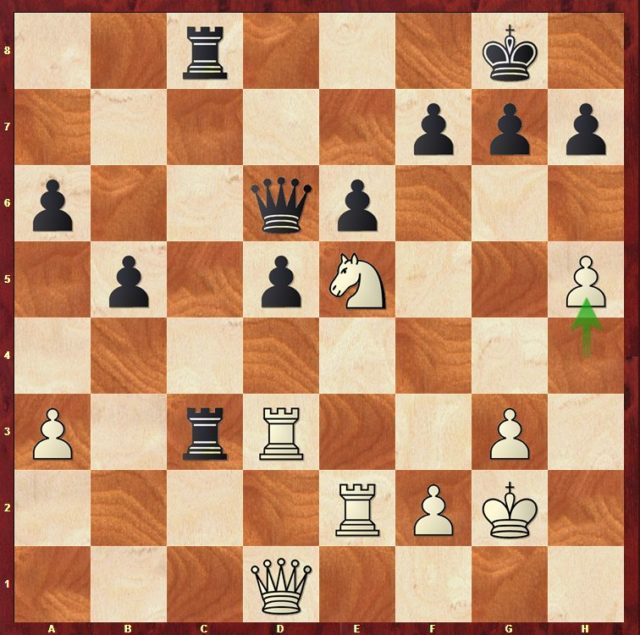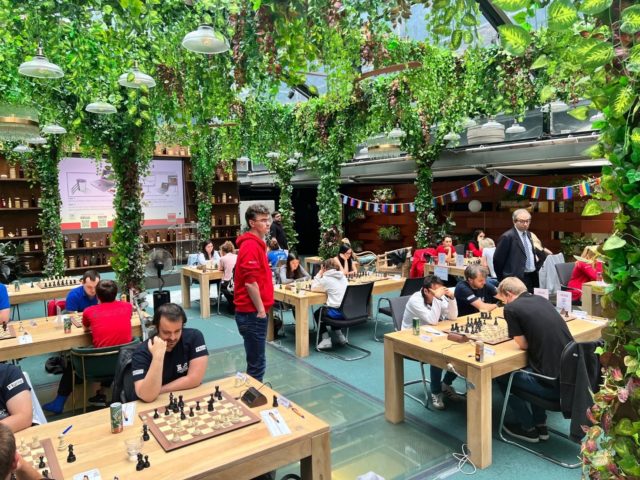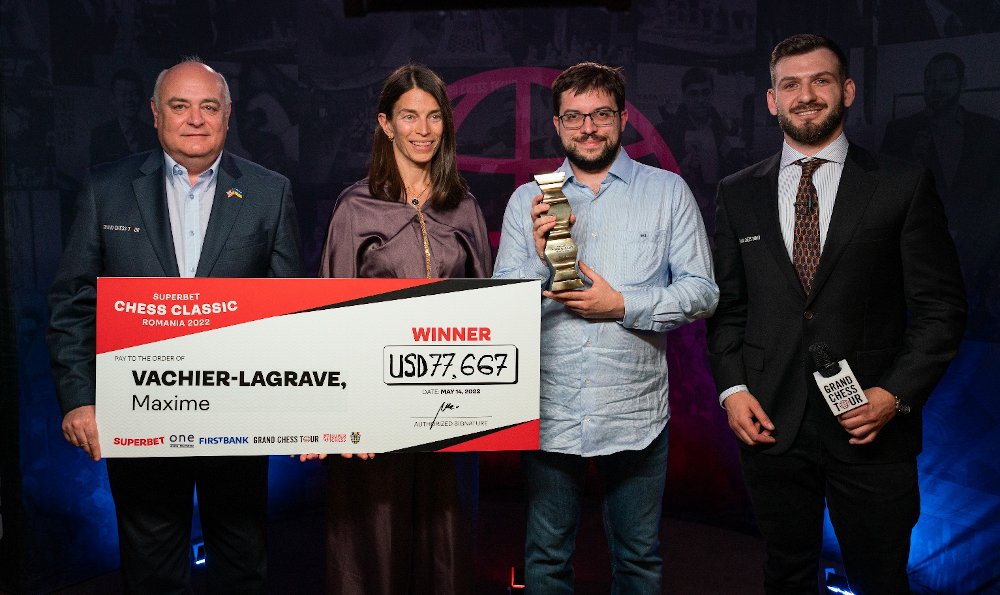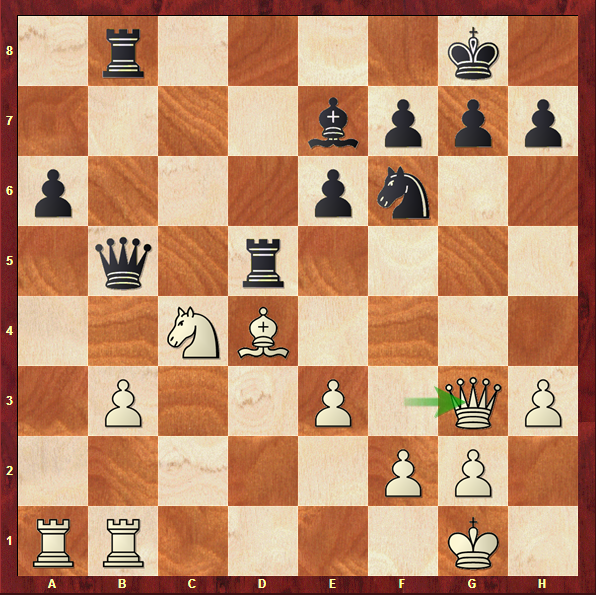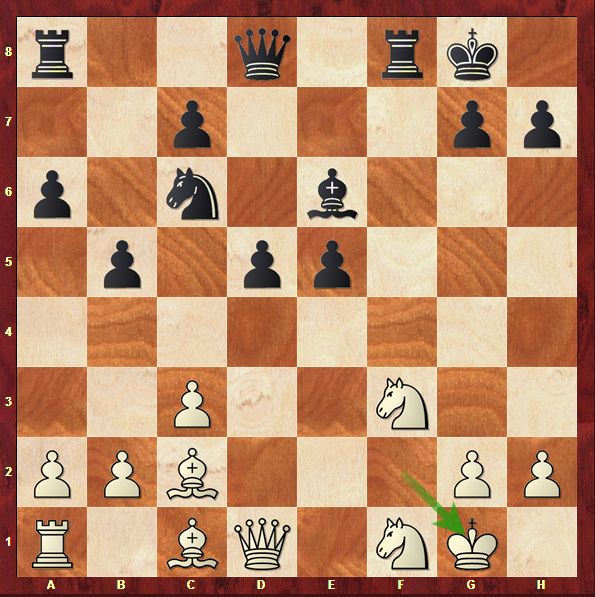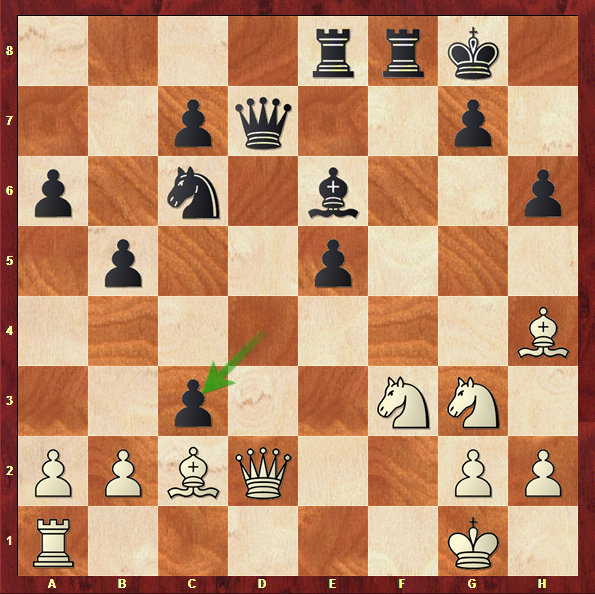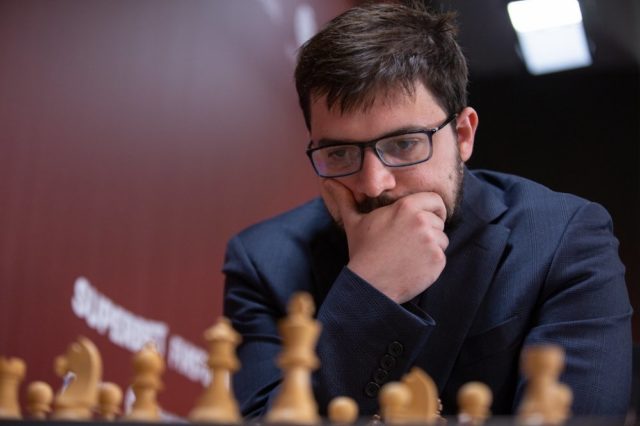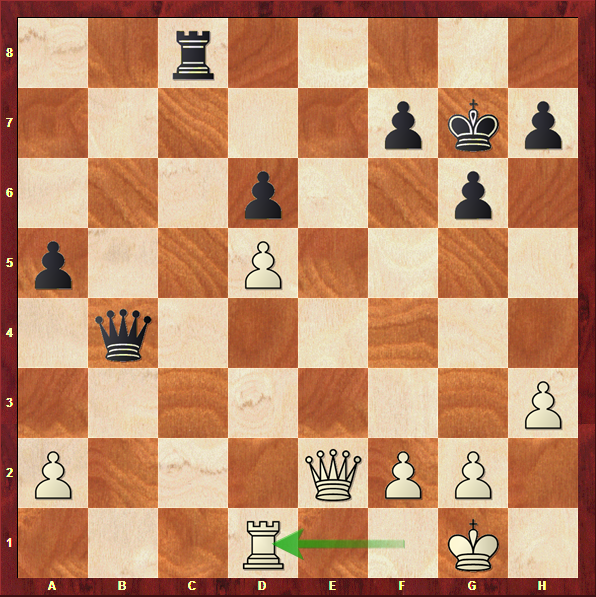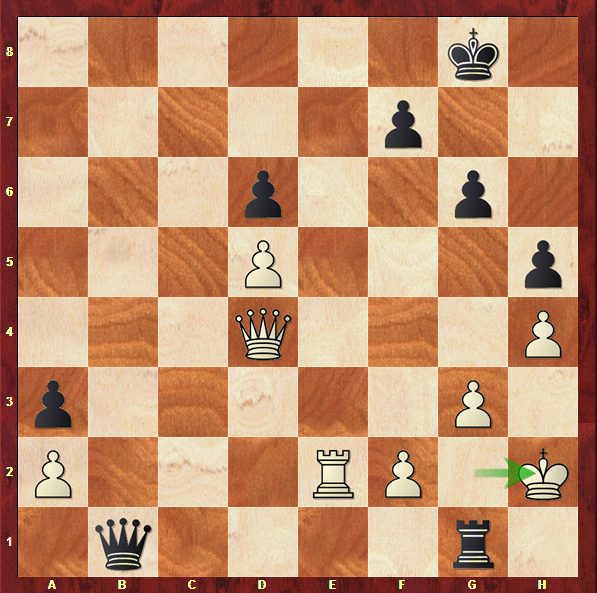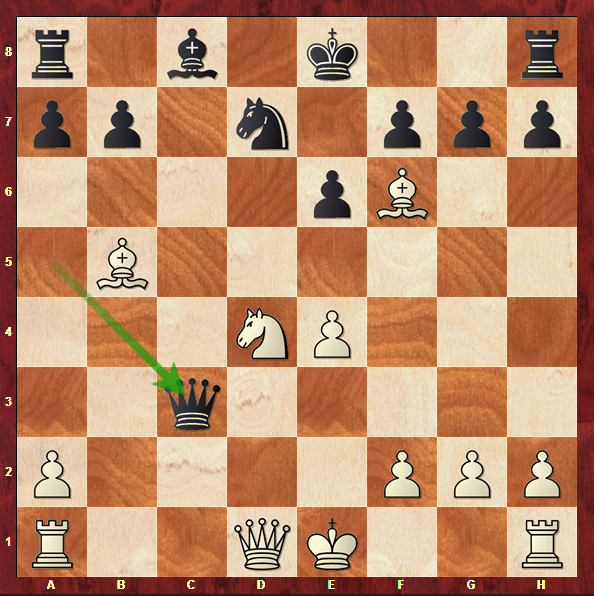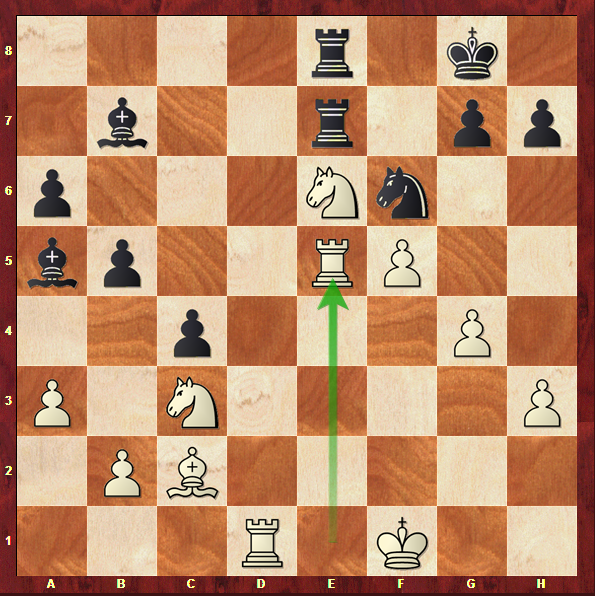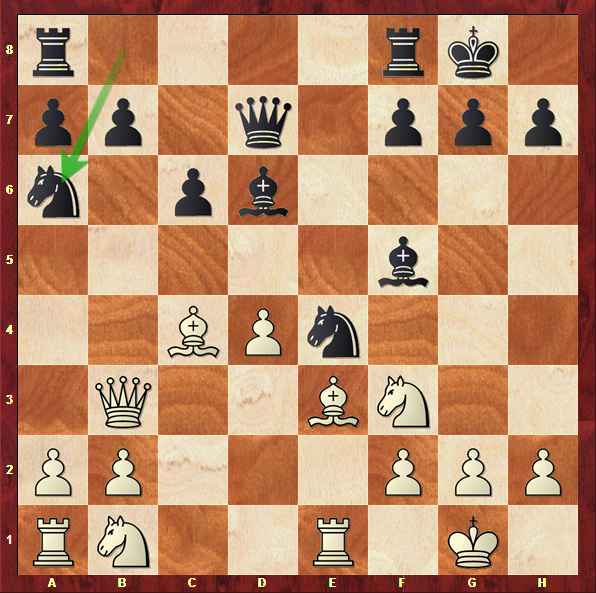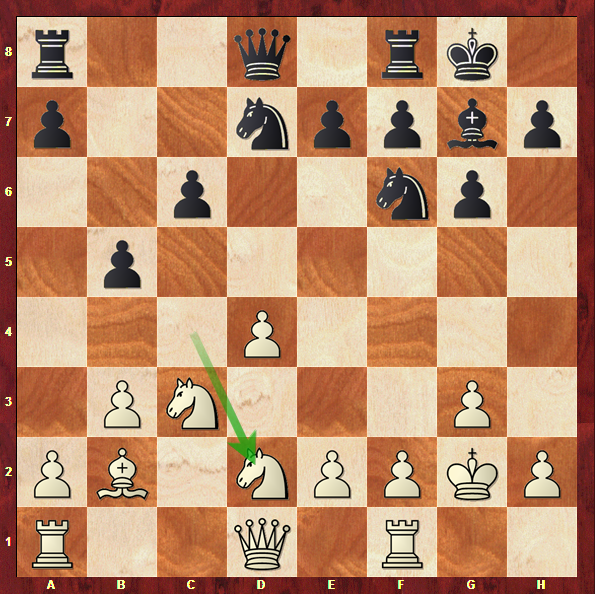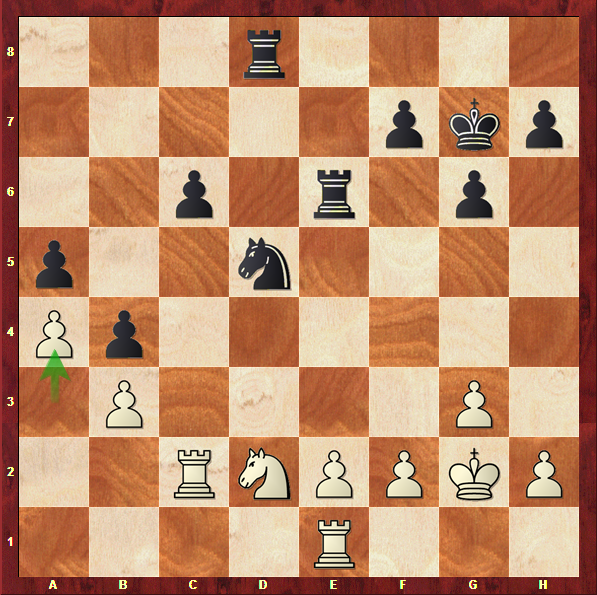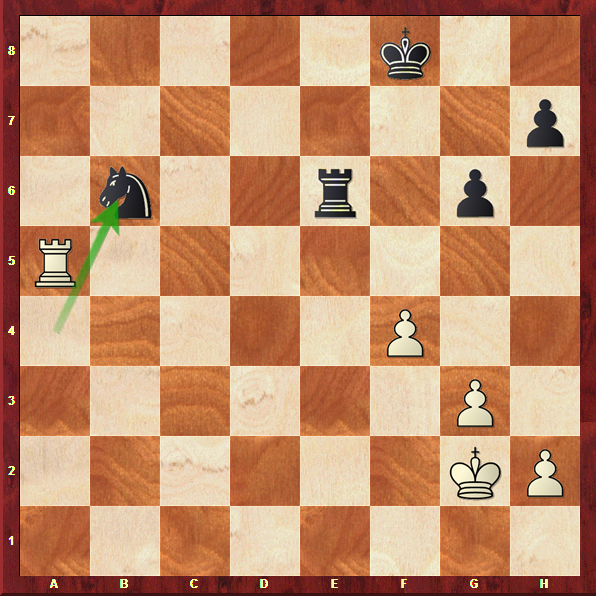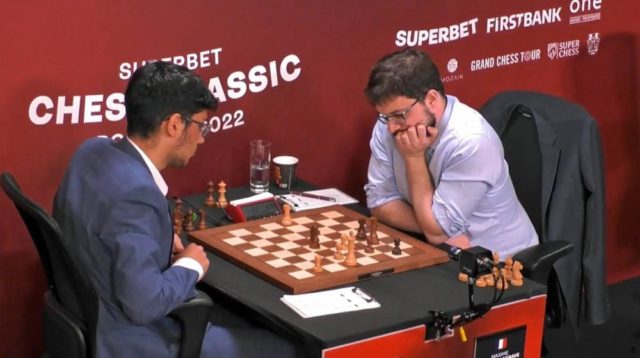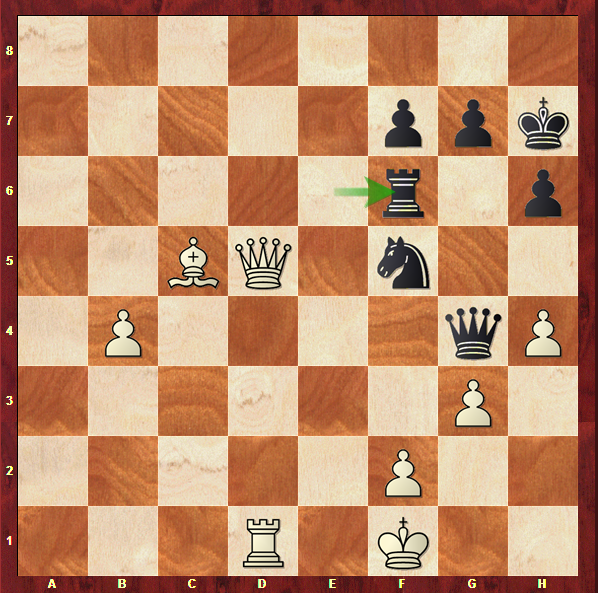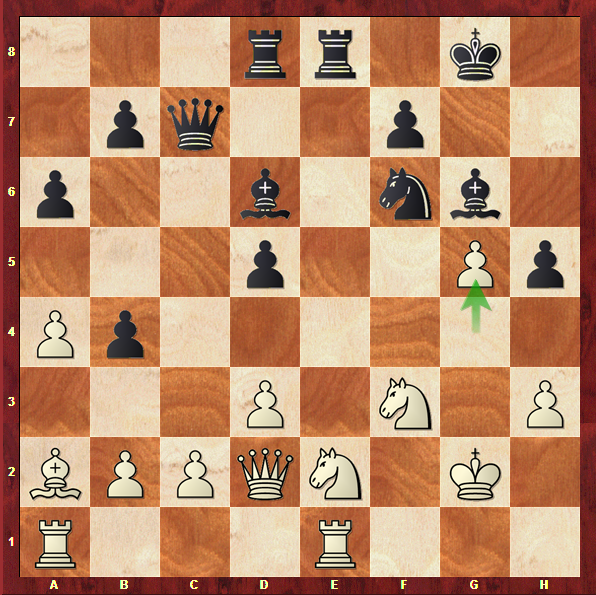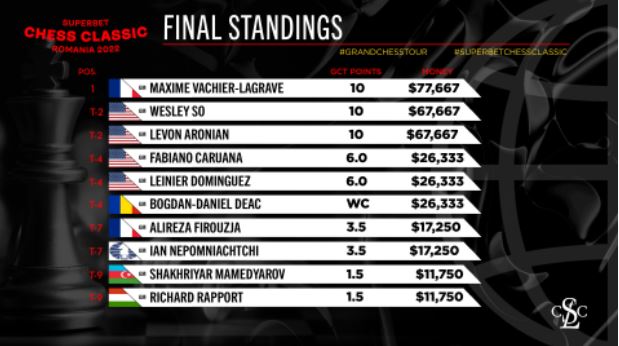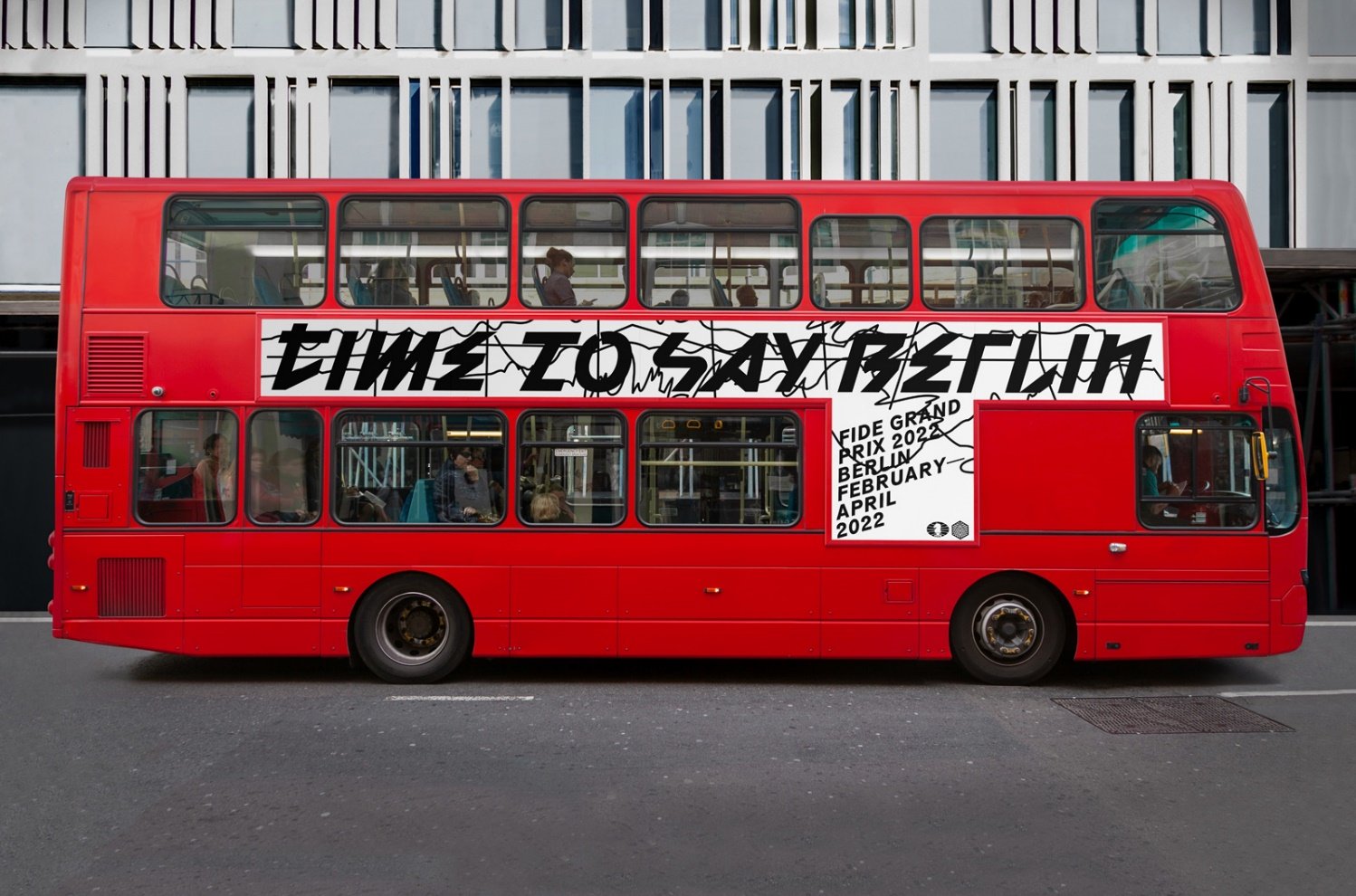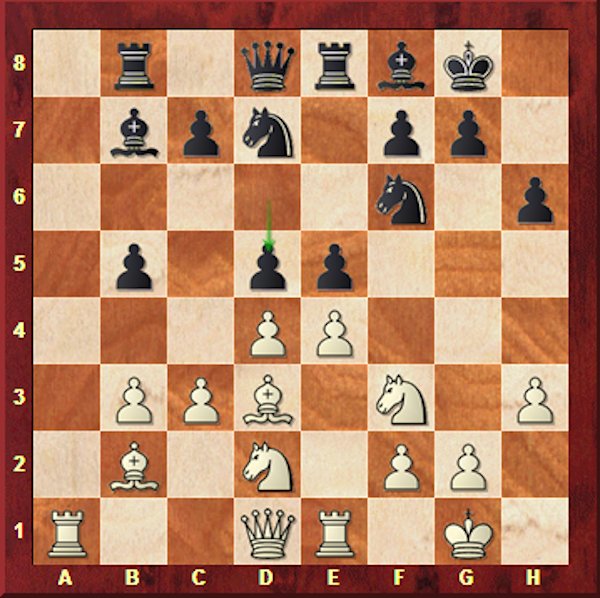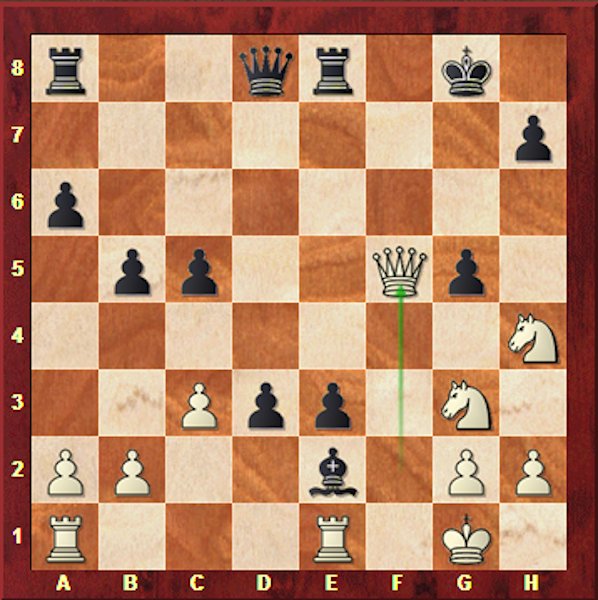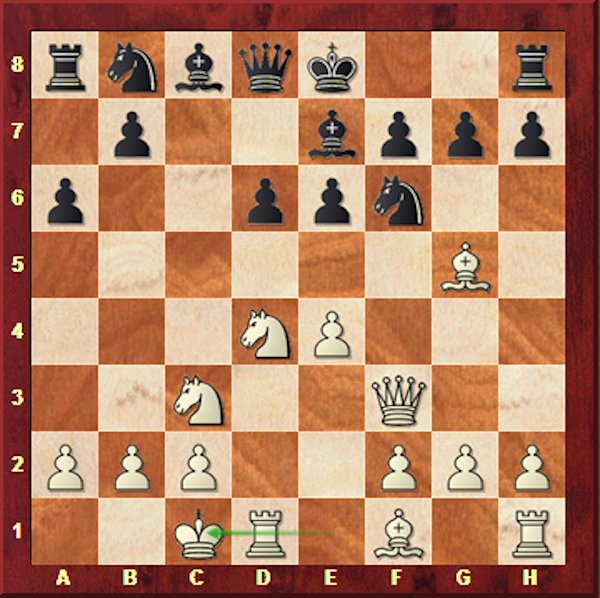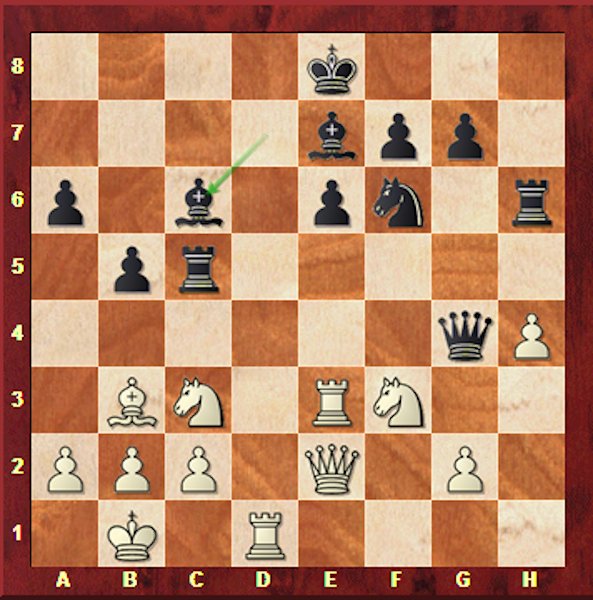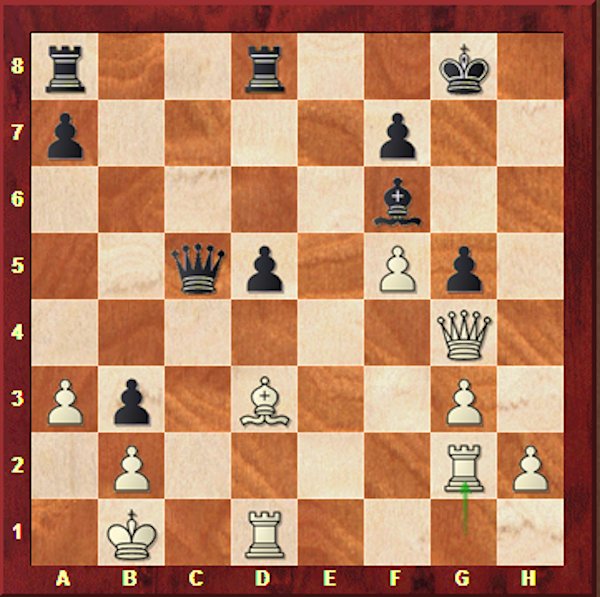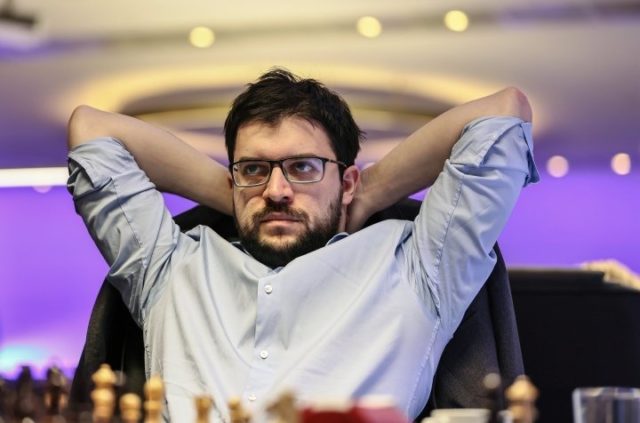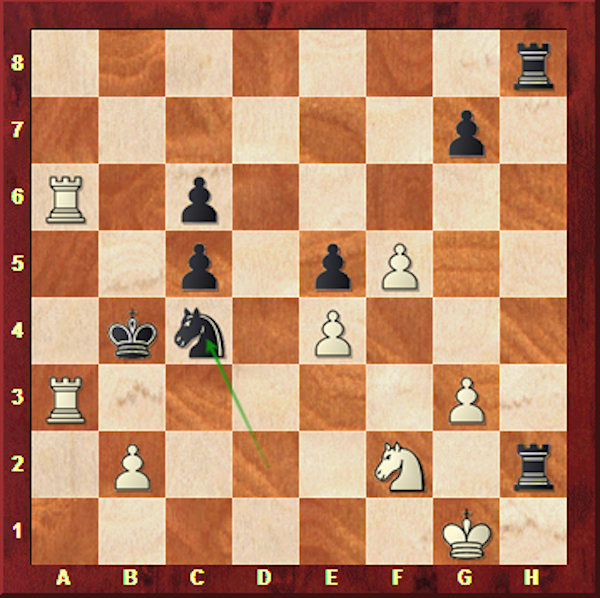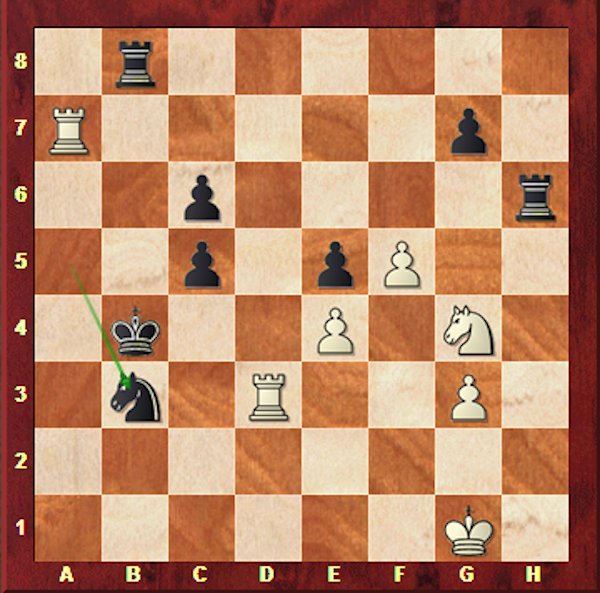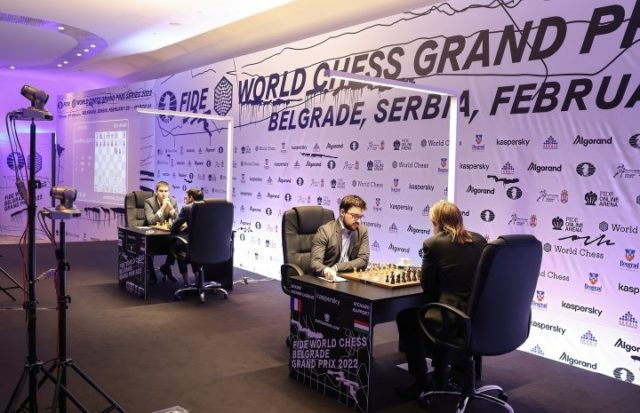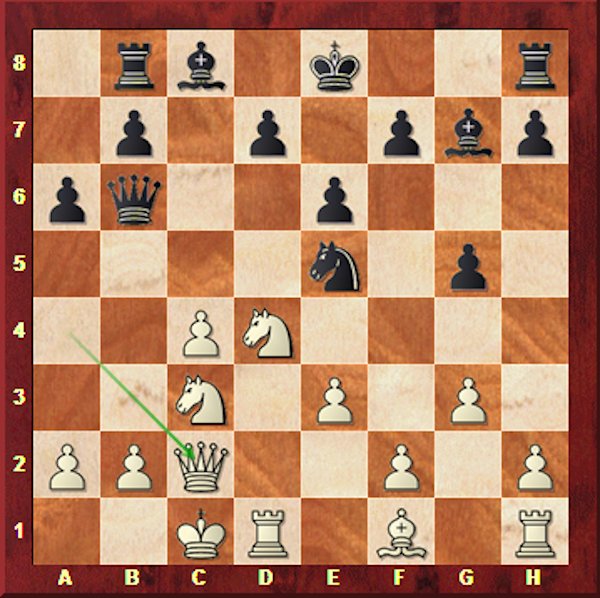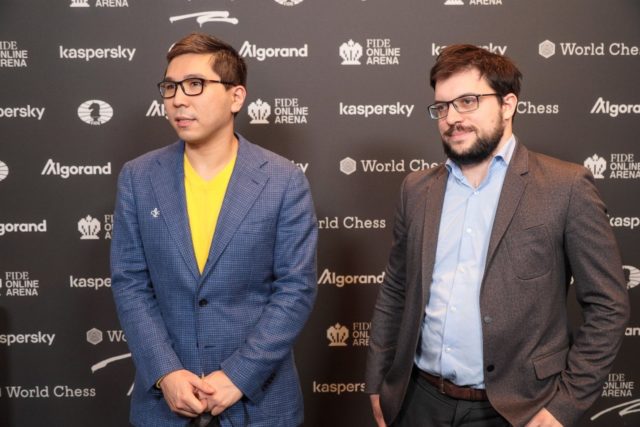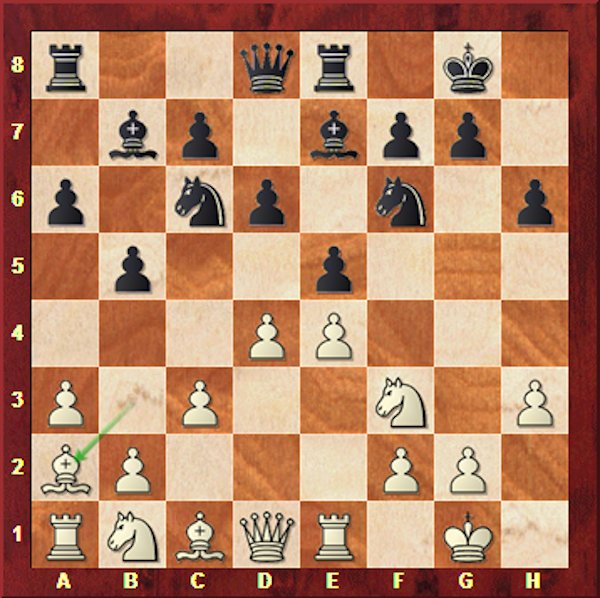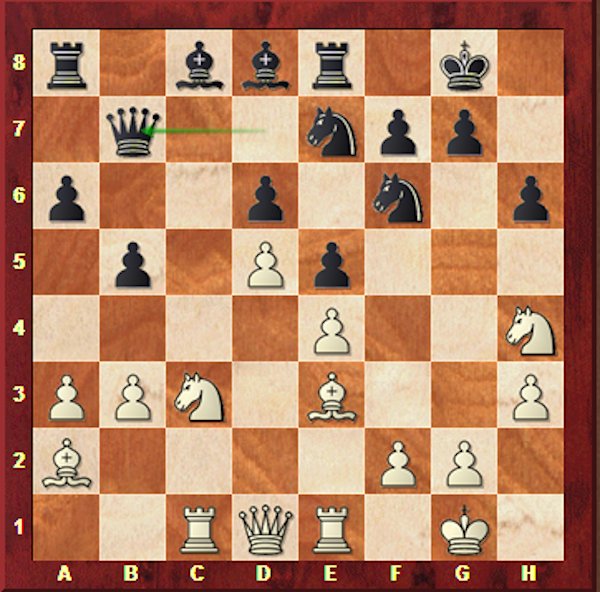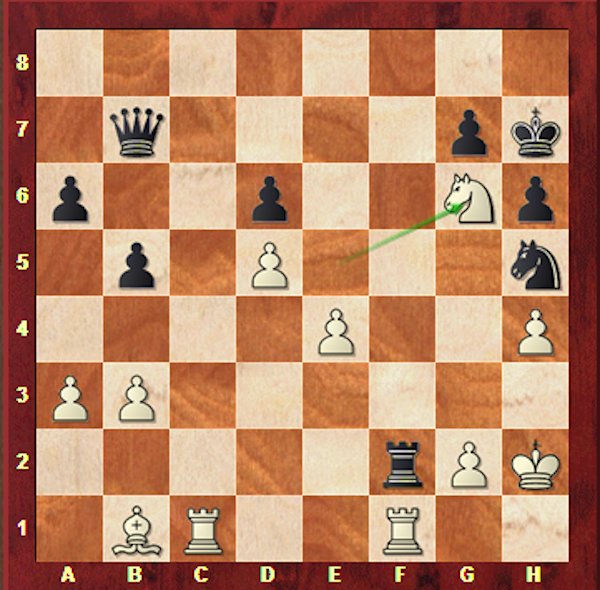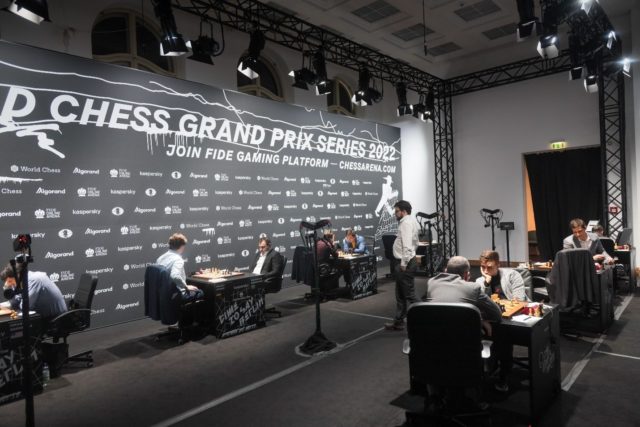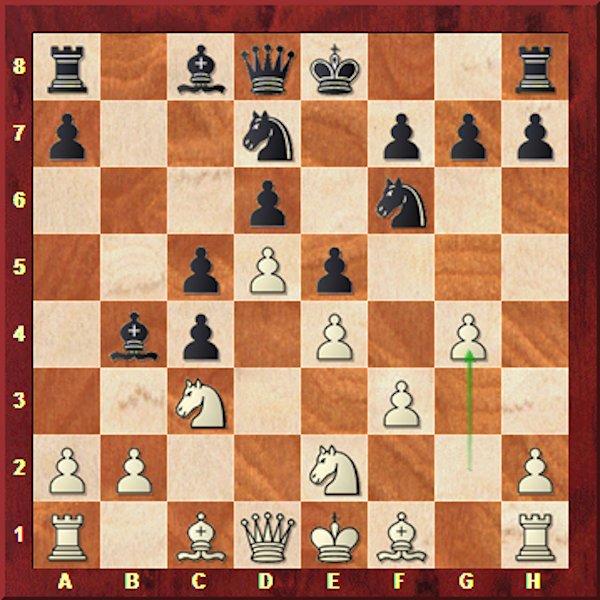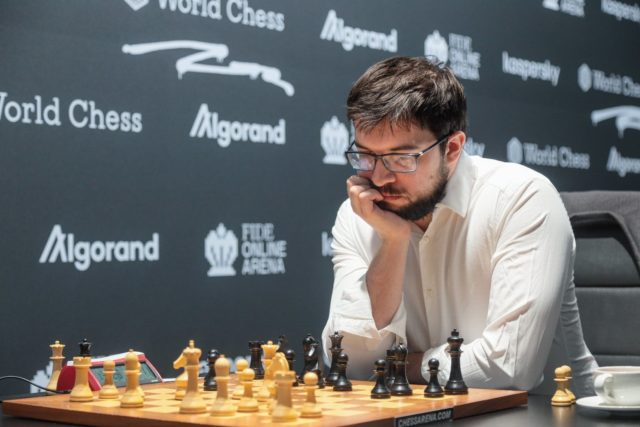On the weekend of July 9-10, I made an express visit to Bremen for the end of the Bundesliga. Although I was unwell at the time, I was able to bring two draws with black, and participate in the new German championship title of Baden-Baden.

A few days later, I left for Zagreb, along with my fellow countryman Alireza Firouzja, to play in the Grand Chess Tour 2022 Rapid & Blitz tournament.
Here are the most important moments of the Rapid tournament, as well as some spectacular moments of the Blitz:
RAPID TOURNAMENT
Round 1: TOPALOV-MVL
A good start in the tournament despite a not very controlled opening.
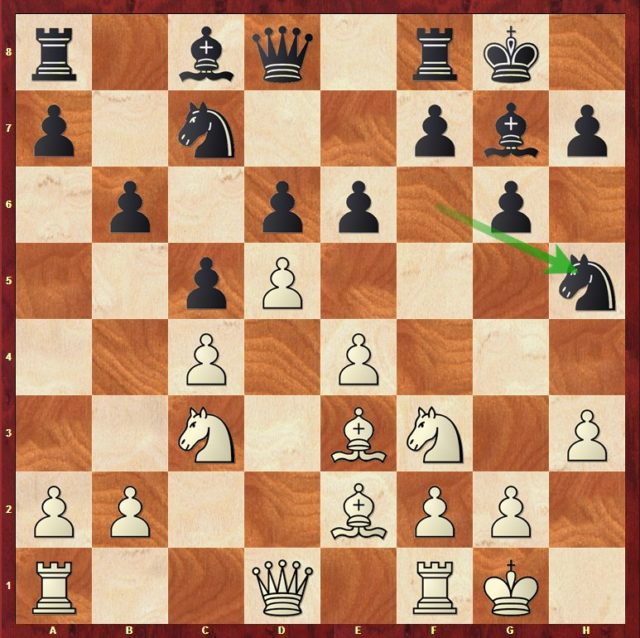
My previous …Na6-c7 maneuver was not precise so I tried to complicate things by preparing …f5. I think Veselin was afraid of this move and he made the bizarre decision 12.dxe6? which turns out to be a strategic mistake because …f5 would have been at least as risky for me as for him! After 12.dxe6? Nxe6 followed by …Bb7, I was able to put pressure on e4 and quickly take an advantage.
Round 3: CARLSEN-MVL
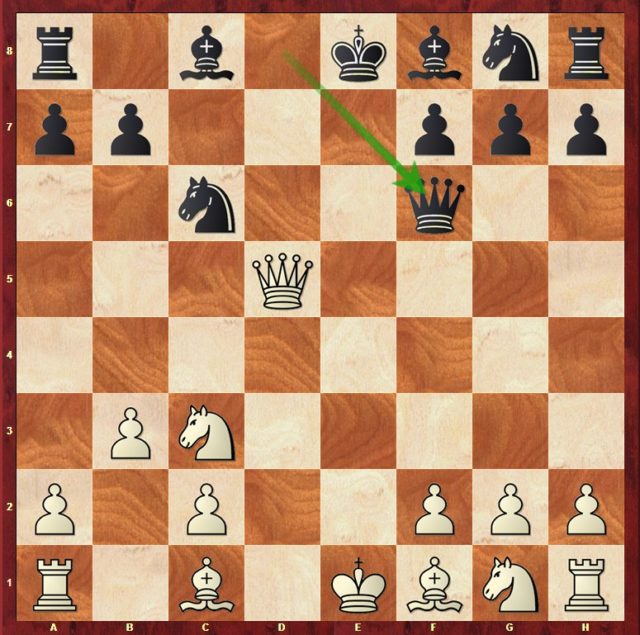
Here white had to start with 9.Qd2! to try to refute my pawn sacrifice in the opening. Because after 9.Bb2? I was able to uncork the elegant 9…Ba3! and I had calculated that after 10.0-0-0 Qxc3 11.Bxa3 Nf6! (but not the suicidal 11…Qa1+? 12.Kd2 Qxa2 13.Bb5!) 12.Qc4 Qa1+ 13.Kd2 Qxa2, white had nothing better than the perpetual following 14.Re1+ Be6 15.Rxe6+ fxe6 16.Qxe6+. A line that may seem dangerous, but I understood that the Knights were actually protecting my King rather well.
A very funny game to end the first day of play…
Round 4: MVL-VAN FOREEST
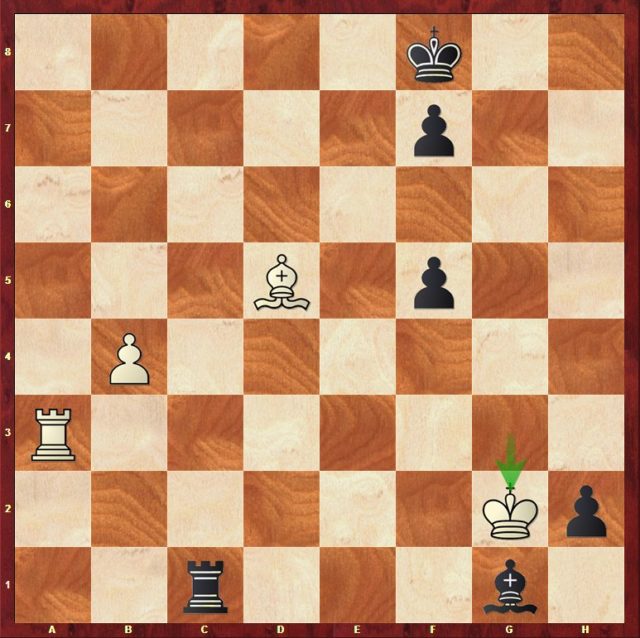
An extremely complex game in which I almost cracked under pressure and ended up in an inferior endgame, which I managed to hold.
Despite 50 torture moves, the draw was signed at move 104!

Round 5: FIROUZJA-MVL
I got a good position against a marginal opening line, with a very quick h3-g4-Bg2 against the Sicilian. But as often, it was in the transition from opening to middle game that I had to lose a bit of momentum. Of course, this is a phase which is one of the main difficulties in chess, but there is certainly room for improving my game here.
In short, I found myself worse after 20 moves…
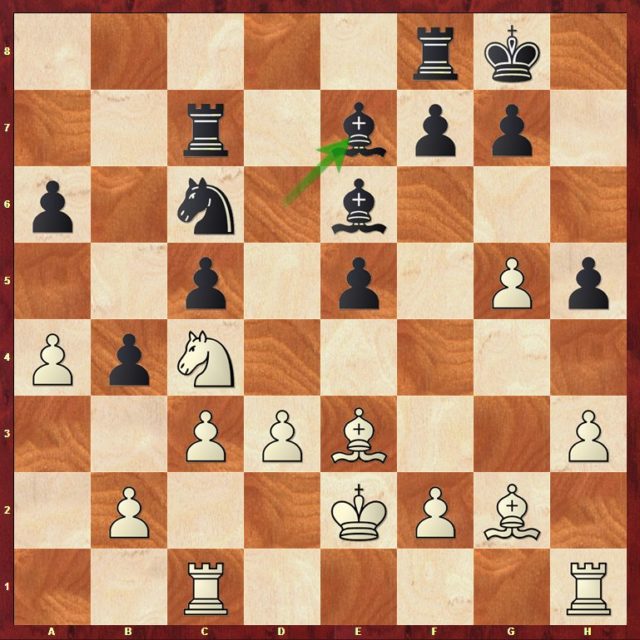
Despite a good series of defensive moves, I would have continued to suffer after a normal move like 21.Be4 or 21.h4, or even the more brutal 21.f4. But Alireza wanted to win a pawn he shouldn’t have taken! After 21.cxb4? Nxb4 22.Nxe5, I could activate my pieces by 22…Rd8 23.Be4 g6 24.h4 Nd5 25.Bd2 Rb8. After that, I played a very good game I think, with quite a few tactical points. That said, it became a hell of a game to calculate, and there were certainly mistakes on both sides; in a position like this one, it’s pretty normal.
But what’s not so great is that I missed the conversion when I had ended up with a winning endgame, plus a lead on the clock.
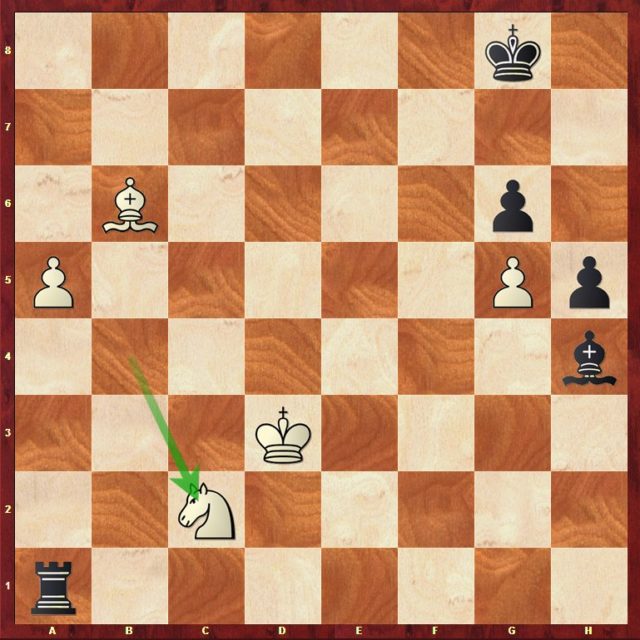
It was time to slow down and invest a good part of my remaining 2’30” to understand that the natural 52…Ra4! was quietly winning, despite the arrival of the King on b3: 53.Kc3 Bxg5 54.Kb3 Re4! and the Rook comes back to e8 to control the a-pawn, while the h5-pawn is a racer. In the game, I managed to let him build a fortress on black squares after 52…Rb1 53.Be3 Rb5 54.a6 Bxg5? 55.a7 Ta5 56.Bxg5 Rxa7 57.Ke4. When I saw in the evening what I had missed, I thought I was really an idiot 🙂 .
Round 6: MVL-SARIC
As I had already had two very long games, I refused to play against Saric’s Najdorf and chose 3.Bb5+, but I got absolutely nothing throughout an insipid game.

Round 7: MAMEDYAROV-MVL
After once again being inaccurate at the end of the opening to counter white’s pawn sacrifice, I made the drastic decision to flee forward; give the pawn back and immediately sacrifice another one right after, in an attempt to free up my position!
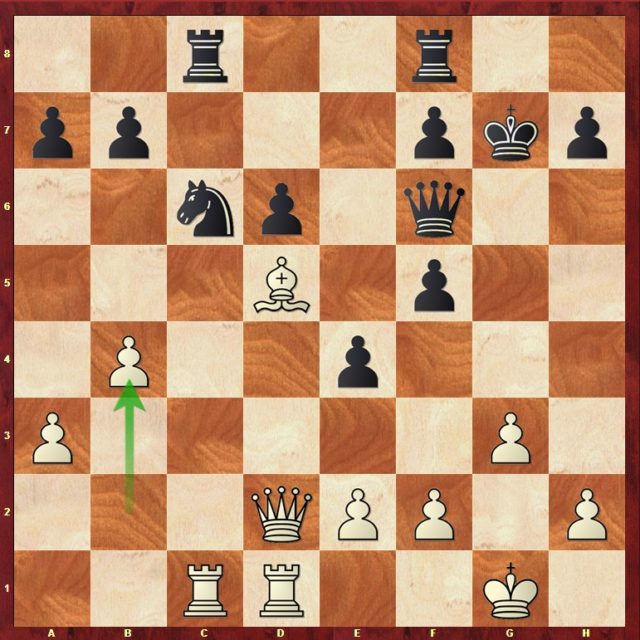
Rather than passively defending myself, I therefore preferred 19…Ne7 20.Bxb7 Rxc1 21.Qxc1 d5!? even if after 22.Bxd5 Rc8 23.Qe3, white’s advantage has certainly changed in nature, but it remains unquestionable; it is no longer « pawn down with big compensations », but « pawn up and not enough compensation for black »!
But his reluctance to weaken the white squares by playing e3 allowed me to get back into the game, creating a miraculous counterplay just in time.
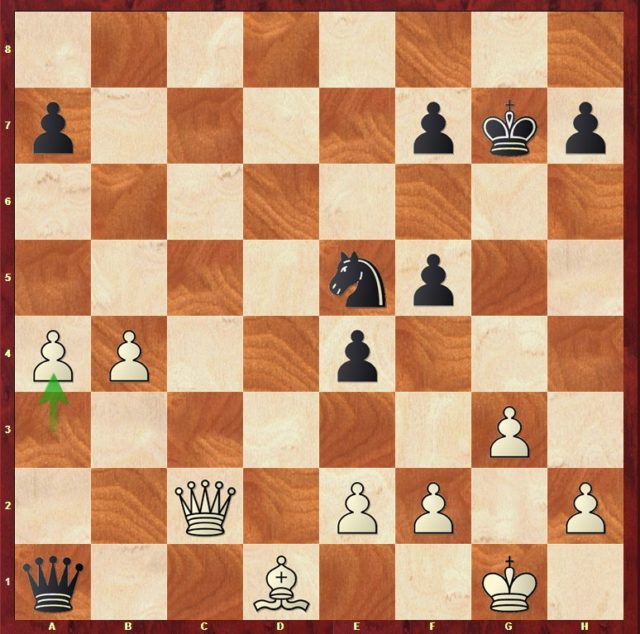
28…e3!. No need to tell me twice! 29.f3?! (too risky for my taste; I think he should have settled for the draw by 29.fxe3 Ng4 30.Qd3 Nxe3 31.Qxe3 Qxd1+ 32.Kf2 Qxa4, but I understand that it was difficult for him to make this decision…) 29…f4 30.Kg2 Ng6. The machine maintains that it’s equal, but in practice, his Queenside majority is blocked, my Qa1 controls the long black diagonal and the e1 square. So the Bishop can’t move, and the Queen can’t move much either…
Then I amplified my counterplay with …h5-h4-h3, arriving at the decisive moment of the game.
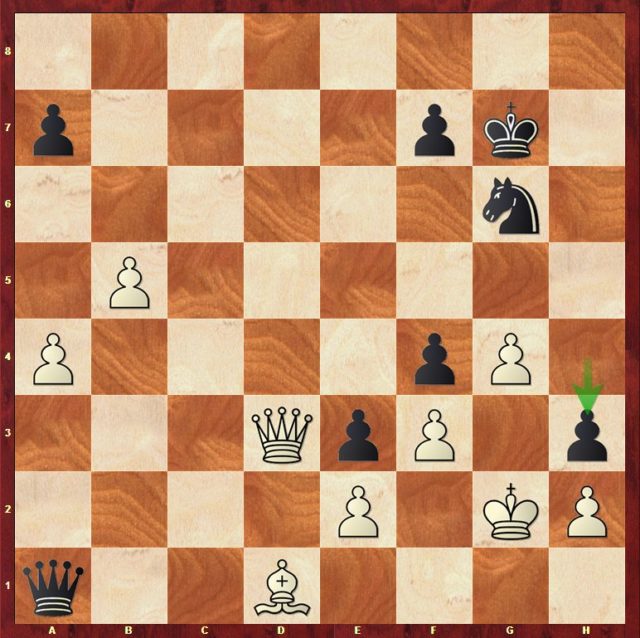
Here it was very hard, but you had to take and after 34.Kxh3 Qf6, find 35.g5! Qxg5 36.Qc3+ and 37.Qe1!. I might as well say that I didn’t have this line, and neither did he!
So he played 34.Kf1? and yes, I found the nice 34…Nf8!
Obviously, my first instinctive reflex was to play 34…Ne5 35.Qd5 Nc4, but I saw that there was 36.Qg5+ and perpetual. And if I play 34…Qf6 immediately, he simply replies 35.Bb3, and 35…Qh4 is always countered by 36.Qc3+ and 37.Qe1. So I fell back to the slower maneuver starting with 34…Nf8! aiming for e6, but not fully appreciating its impact. I didn’t know I was winning; I thought he still had a defense, with 35.Qd5 Ne6 36.g5, but it certainly wasn’t enough in reality. Anyway, I understood that I was not running any risk by choosing this maneuver. Because my Ne6 prevents all checks; it really controls everything and is finally better placed than on g6. As for my Da1, it is still strong and I have the idea with …Df6-h4 in reserve.
After 34…Nf8!, I had anticipated his attempt to break free 35.a5? Qxa5 36.Qd4+ Kg8 37.Qxf4, and saw that 37…Qd2! would be lethal. Which was true, but not without having to pass a final pitfall, which my opponent and I both missed. In our defense, it was really hard to detect with little time on the clock. In fact, after 38.Qa4, black had to calmly start with 38…Ne6! to actually win. But I thought that 38…Qd6? put an immediate end to the game, which turned out to be true after 39.Kg1? Ne6 40.Qc2 Qd8! followed by 41…Qh4 and white resigned.
But after 38…Qd6?, white had the possibility to free himself by 39.Bb3, since after 39…Qxh2, there would have been 40.Bxf7+! with a more than improbable perpetual! Whether black takes the Bishop or not, and despite the presence of the defending Nf8, black’s King won’t find any shelter…

Round 8: NEPOMNIACHTCHI-MVL
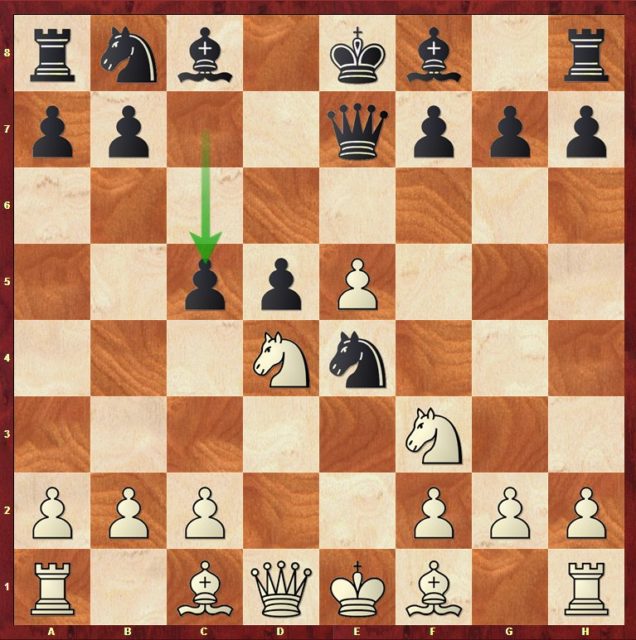
A little opening tragedy!
I knew that his move 7…c5? was bad and that 7…Nd7 should played instead, but I couldn’t remember the refutation. After 8.Nb5 Be6, I saw 9.c4! but not the continuation 9…dxc4 (9…a6 10.cxd5) 10.Ng5! which exploits the weakness of the d6-square and wins by force.
It’s a pity, and I made a non-game afterwards, putting up very little resistance.
Round 9: DOMINGUEZ-MVL
Always well prepared, the American obtained a stable and advantageous position in the 7.Be3 e5 variation against the Najdorf, but I maneuvered rather well in defense, especially with my Knights, to completely annihilate his initiative.
BLITZ TOURNAMENT
So here are the key or spectacular moments in my blitz tournament games:
Round 1: MVL-SARIC
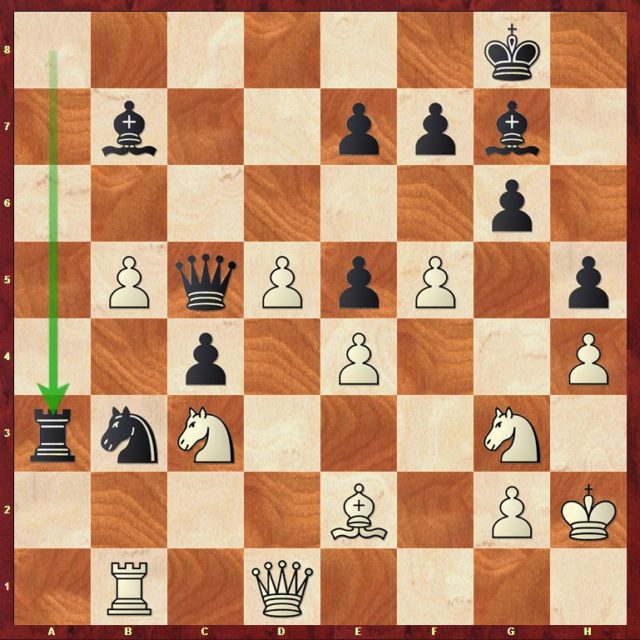
28.Bxh5? ; an intuitive sacrifice, which would have been possible if 28.fxg6 fxg6 29.Bxh5!? had been intercalated, since 29…gxh5? would now be impossible because of 30.Qxh5, taking advantage of the f5-square for the Knight and the h5-e8 diagonal for the Queen. However, after 28.Fxh5? immediately, Saric could have safely taken because after 28…gxh5 29.Nxh5 Bh6, white’s attacking potential is clearly insufficient. But he trusted me and after 28…Qe3? 29.fxg6 Qxc3 30.gxf7+ Kf8 31.Qg4! my attack became irresistible.
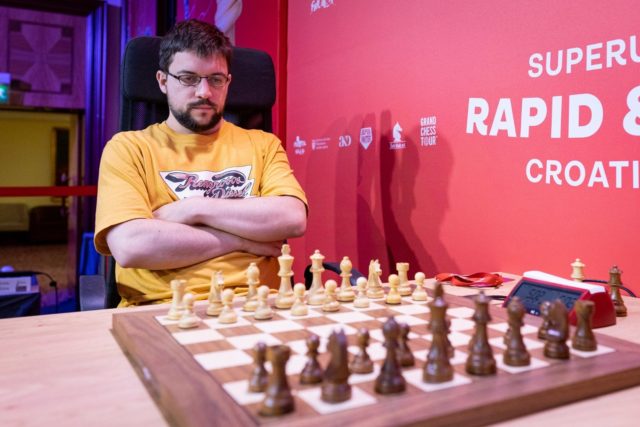
Round 3: MAMEDYAROV-MVL
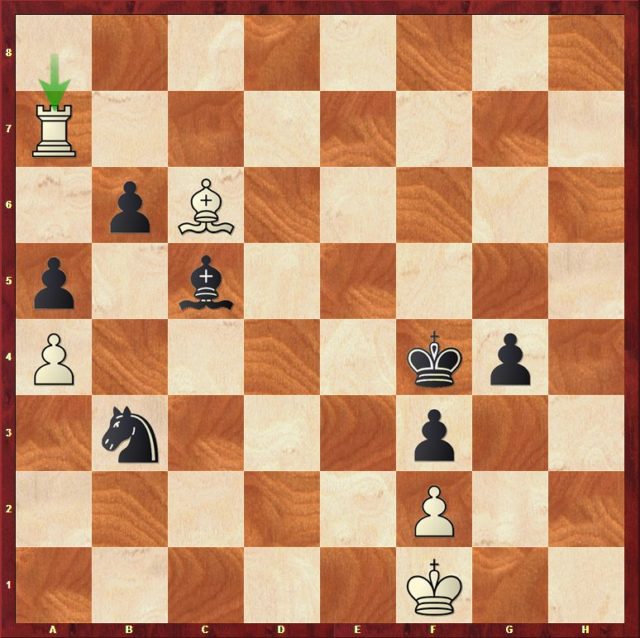
In this equal position, I decided in a few seconds to take my chance with 42…Fxf2?, even if I was not at all sure of the move! After 43.Kxf2 g3+, Mamed had to find the difficult 44.Kf1! though, the idea being that 44…Nd2+ 45.Ke1 f2+ is not possible because of 46.Kxd2 f1=Q 47.Rf8+. But in the rush of a blitz ending, he played the human move 44.Kg1? after which the position is again a draw: 44…Nd4 45.Rf7+ Ke3 46.Re7+ Kd2 47.Rd7. Unfortunately, I took the wrong direction here and after 47…Ke1? (47…Kc3! 48.Rxd4 Kxd4 49.Bxf3 b5! 50.axb5 Kc5 and draw) 48.Bxf3? (48.Bb5! and +- according to the machine!) 48…Nxf3+ 49.Kg2 Nd2 50.Kxg3 and again I didn’t manage to keep my King near the Queenside; 50…Nc4? 51.Kf4 Ke2 52.Ke4 Nb2 53.Rd4 1-0.
However, the draw was still there after 50…Kd1! 51.Kf4 (51.Rc7 Ne4+ 52.Kf4 Nc5 = or 51.Rd6 Kc2 52.Rxb6 Ne4+ 53.Kf4 Nc3 54.Rc6 Kb3 =) 51…Kc2 = ; the black’s King helps the defense, which changes everything.
Round 5: CARLSEN-MVL
A very good game on both sides, which was decided in the very last seconds.
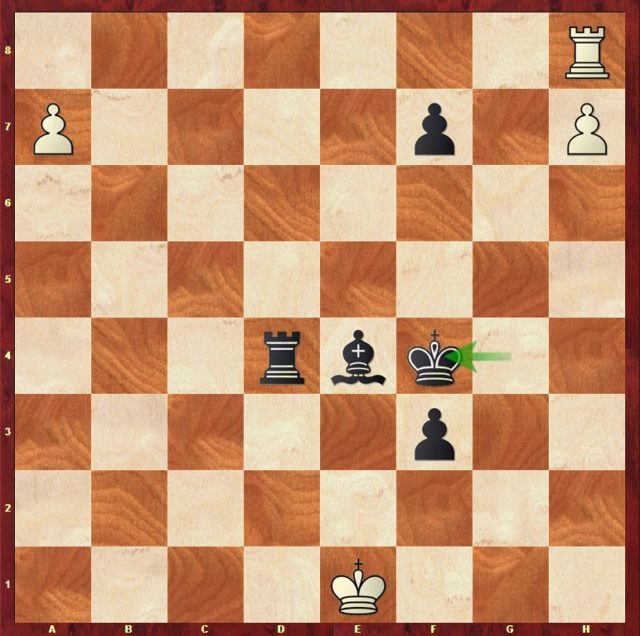
I missed the draw a few moves earlier, and Magnus just had to play the trivial 63.a8=Q Bxa8 64.Rxa8 and I would have given up. But in the final frenzy he opted for 63.Re8? , and after 63…Ra4? 64.h8=Q 1-0. I obviously did not have time to find 63…Bc2! which led to a forced draw, but only manageable with time on the clock, so no regrets! The defense mechanism is however very nice and worth the detour: white starts by having the choice of his Queen promotion! 64.h8=Q (actually, 64.a8=Q doesn’t change anything) 64…Rd1+ 65.Kf2 Rd2+ 66.Kg1 (66.Kf1 Rd1+ 67.Re1 Bd3+ 68.Kf2?? would be refuted by 68…Rd2+ 69.Kg1 f2+) 66…Rd1+ 67.Re1!? (the last attempt!) 67…Rxe1+ 68.Kf2 Re2+ 69.Kf1 Be4 70.a8=Q Bxa8 71.Qxa8 and the easiest is now 71…Kg5 72.Qxf3 Re6! followed by 73…Kg6 and it’s a fortress!
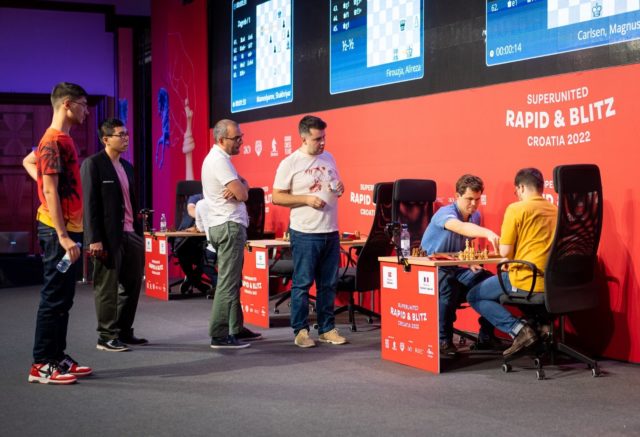
Round 9: DOMINGUEZ-MVL
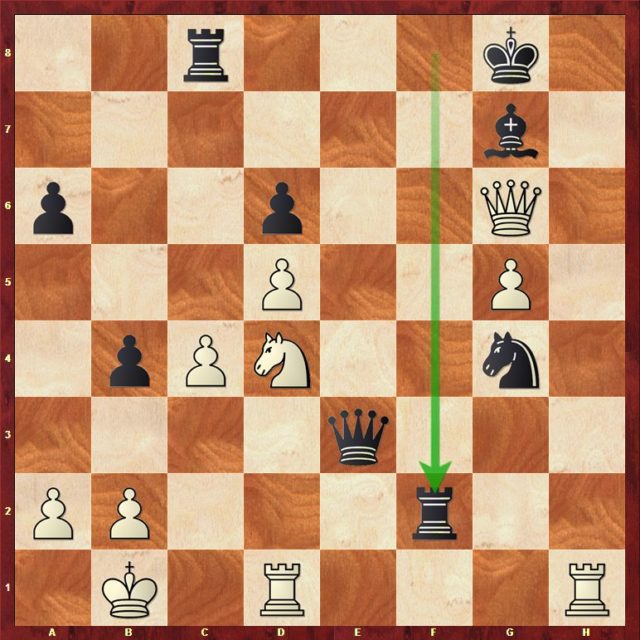
In a very wild Najdorf with opposite castling, white’s attack was faster. With my last move 29…Rf2, however, I managed to pose a complex problem to white: how to conclude? Obviously, 30.Ne6? doesn’t fit because of 30…Rxb2+ 31.Ka1 Rxa2+ followed by mate. The right solution was far from obvious, and none of us saw it: 30.Rhe1! (not easy to think of leaving the h-file!) and if the Queen moves, 31.Qe6+ wins instantly. For the sake of argument, let’s point out that black would still have had a devilishly strong looking defense after 30.Rhe1! Rd2!. Unfortunately, it’s not enough if you really go to the end of the line: 31.Rxe3 Rxd1+ 32.Kc2 Nxe3+ 33.Kb3 Rxd4 34.Qe6+ Kh7. Everything seems to be going well for black because white’s Queen cannot take both the Rc8 and the Ne3 simultaneously. But chess is sometimes magical! 35.g6+! Kh8 36.Qxe3+ Kxg6 (36…Kh5 37.Qh3+) 37.Qe6+ Kg5 38.Qxc8 and the trick is over!
Instead, Dominguez chose 30.Qh7+? Kf8 31.Rd3? (31.Ne6+ was this time imperative, and after 31…Qxe6 32.dxe6 Rxb2+ 33.Ka1 [33.Kc1?? Rxc4+ and mate] Black has the choice between perpetual or continuing the game with 33…Rh2+) 31…Bxd4! (the point!) 32.Rxe3? (32.Rxd4 Qxd4 33.Qh8+ Qxh8 34.Rxh8+ Ke7 35.Rxc8 still offered some practical chances in blitz) 32…Rxb2+ 33.Kc1 Rxc4+ 34.Rc3 Bxc3! 35.Rf1+ Bf6+ 36.Kd1 Ne3+ 0-1, it is mate next move.
Round 10: SARIC-MVL
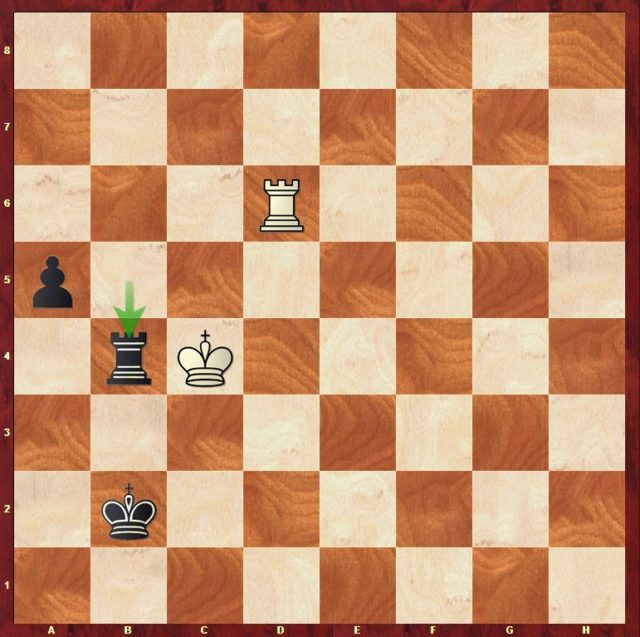
In blitz, even endgames with hugely reduced material are difficult: here, 59.Kd3?, chosen by Saric, loses because white’s King is excluded from the defense after 59…a4 60.Rg6 a3 61.Rg2+ Kb3 (but not 60…Kb1? 61.Kc3!) 62.Kg1 a2 0-1.
Necessary was 59.Kc5!, but who can be sure to defend such an endgame perfectly with only two seconds per move?
Round 11: NEPOMNIACHTCHI-MVL
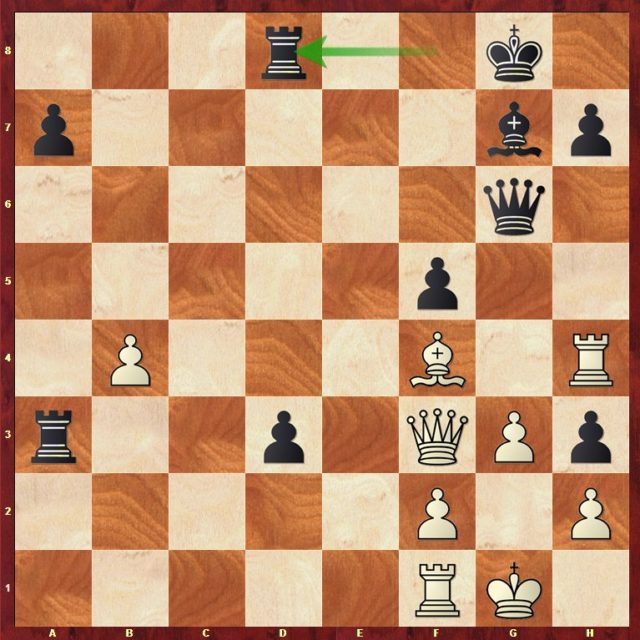
Ian did not see the threat introduced by my last move and fell into the trap! 33.Bc7? (33.Rd1 was necessary) 33…d2! and everything falls apart: 34.Qxa3 (34.Qe2 Qc6!) 34…d1=Q 35.Bxd8 Qc6! 36.f3 (36.Rxh3 Qh1+! 37.Kxh1 Qxf1 #) 36…Qcc2 0-1.
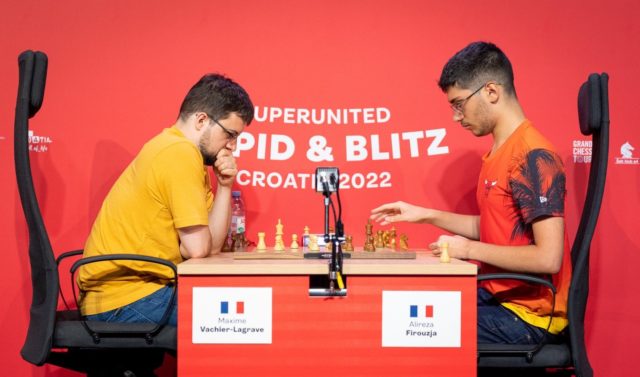
Round 13: FIROUZJA-MVL
After a game full of twists and turns, Alireza and I were victims of hallucinations in the final rush:
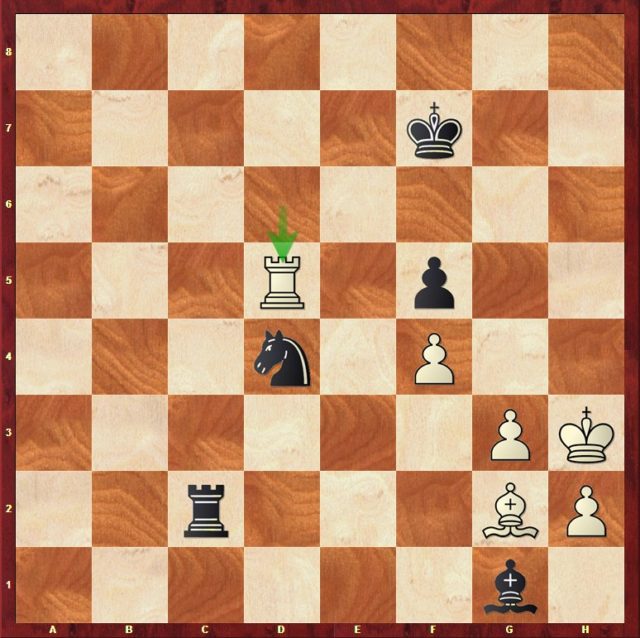
I suppose black’s position must be winning in the long run, but not after 45…Nf3?,completely forgetting 46.Rd1 and I lose a piece. This was followed by 46…Nxh2 47.Rxg1 Ng4 and the position is a draw, nobody being able to do anything, except after 48.Kh4? Rc7! and 0-1, mate being unstoppable!
Round 15: VAN FOREEST-MVL
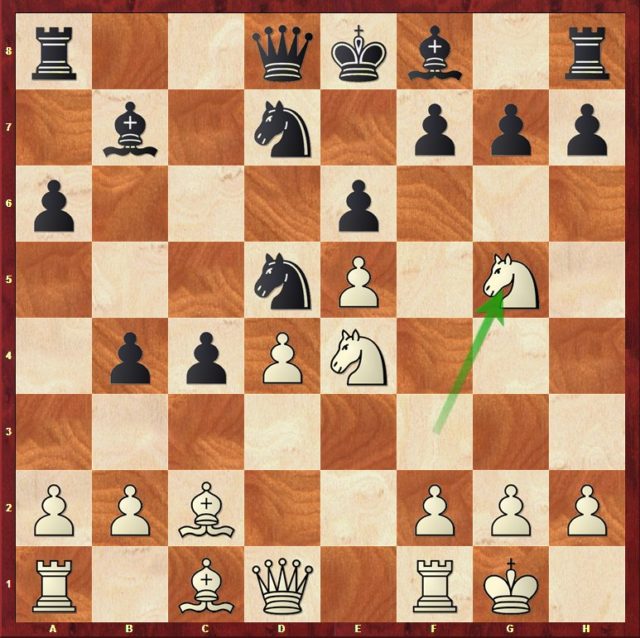
An opening disaster, after I got confused (pushing …c4 and …b4 instead of exchanging on d4). After 13.Nfg5, I almost resigned. I continued anyway with 13…Be7 14.Qh5 (14.Qf3! Rf8 15.Nxh7 is even easier) 14…g6 15.Qh6 Qb6 16.Qg7 Rf8. Here, moves that protect d4, like 17.Be3 or 17.Rd1, are good. 17.Ba4 is strong too. But not Jorden’s choice of move, 17.Nxh7? (was all I was hoping for!) 17…Qxd4 (I’m crazy about sacrificing the exchange!) 18.Bg5 Qxe5 19.Qxe5 Nxe5 20.Ba4+ Bc6 21.Bxc6+ Nxc6 22.Nxf8 Kxf8 and black is perfectly ok. It was a close call which I ultimately managed to win!
Round 18: MVL-DOMINGUEZ
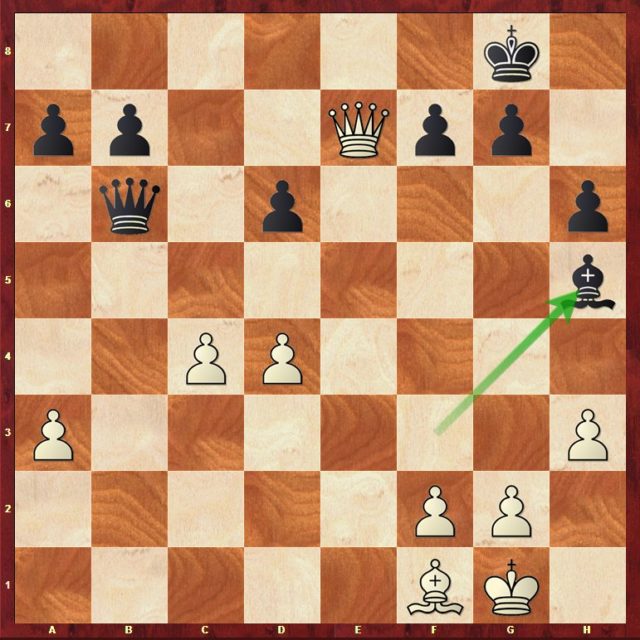
In this position, I played 31.Bd3 Bg6 32.Bxg6 fxg6 33.Qe4 with a very slight advantage in the Queen endgame, transformed into a win after many adventures. But instead of this,, the position contained a rather elementary win, but I missed it completely: 31.c5! dxc5 32.d5 and the pawn goes!
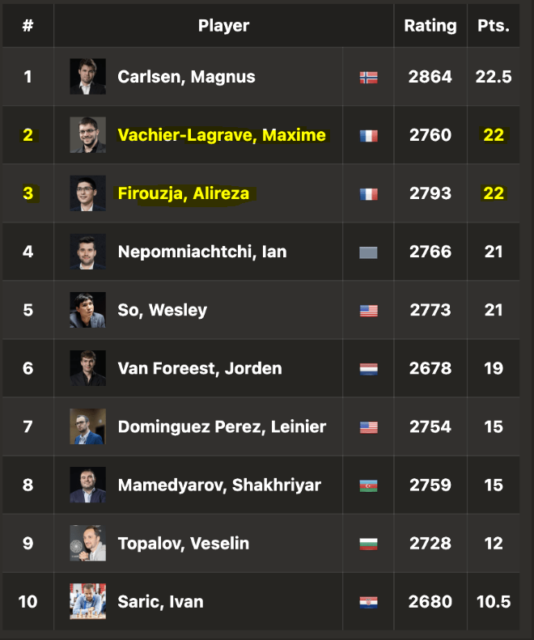
The overall result is rather positive: 5/9 in the Rapid (with 5 blacks), and a mediocre first day of blitz (4/9), compensated by a huge comeback the next day (8/9). Strangely enough, my friend Alireza had an almost similar performance to mine, and it is therefore logical that we share the second place in the final ranking, half a point behind Carlsen, untouchable in Croatia.
I have already spoken several times about my non-participation in the Olympiads in India, and I take this opportunity to wish good luck to the French teams. The next step for me will be a month-long trip to the United States starting August 12. After a few days of rest, I’ll go to Connecticut, where I will be present during the Bridgeport Open (August 19-21). On the 23rd, the mythical Marshall Chess Club in New-York has invited me to give a lecture and a simultaneous display. I’ll then fly to Missouri the next day, where the Grand Chess Tour starts again in St-Louis, with the Rapid & Blitz from August 26th to 30th, then the Sinquefield Cup from September 2nd to 12th.
Maxime’s games in Bundesliga
:
Maxime’s rapid games in Zagreb :
Maxime’s blitz games in Zagreb :
The day before his departure to Zagreb, Maxime went to Saint-Denis, in the suburbs of Paris, to learn the new trendy racket game, padel. Accompanied by a few friends, including GMs Laurent Fressinet and Sébastien Mazé, he was able to discover this intense sport, as shown in this photo taken by Laurent Fressinet… moments before the drama!
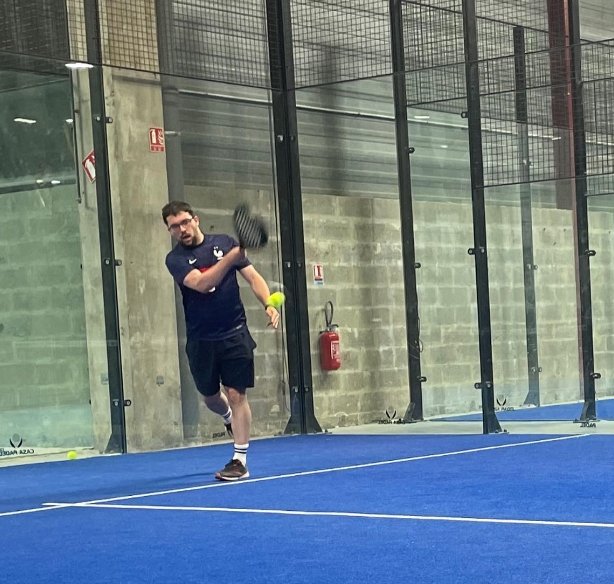
Indeed, a few minutes later, an unfortunate smash earned Maxime a return of the racket on the face, with however more fear than harm. But the glasses didn’t resist… Too late to change them before the plane the next morning, but fortunately for him, an old spare pair was lying around in a drawer. This saved him from having to play in Croatia « almost blind »!
